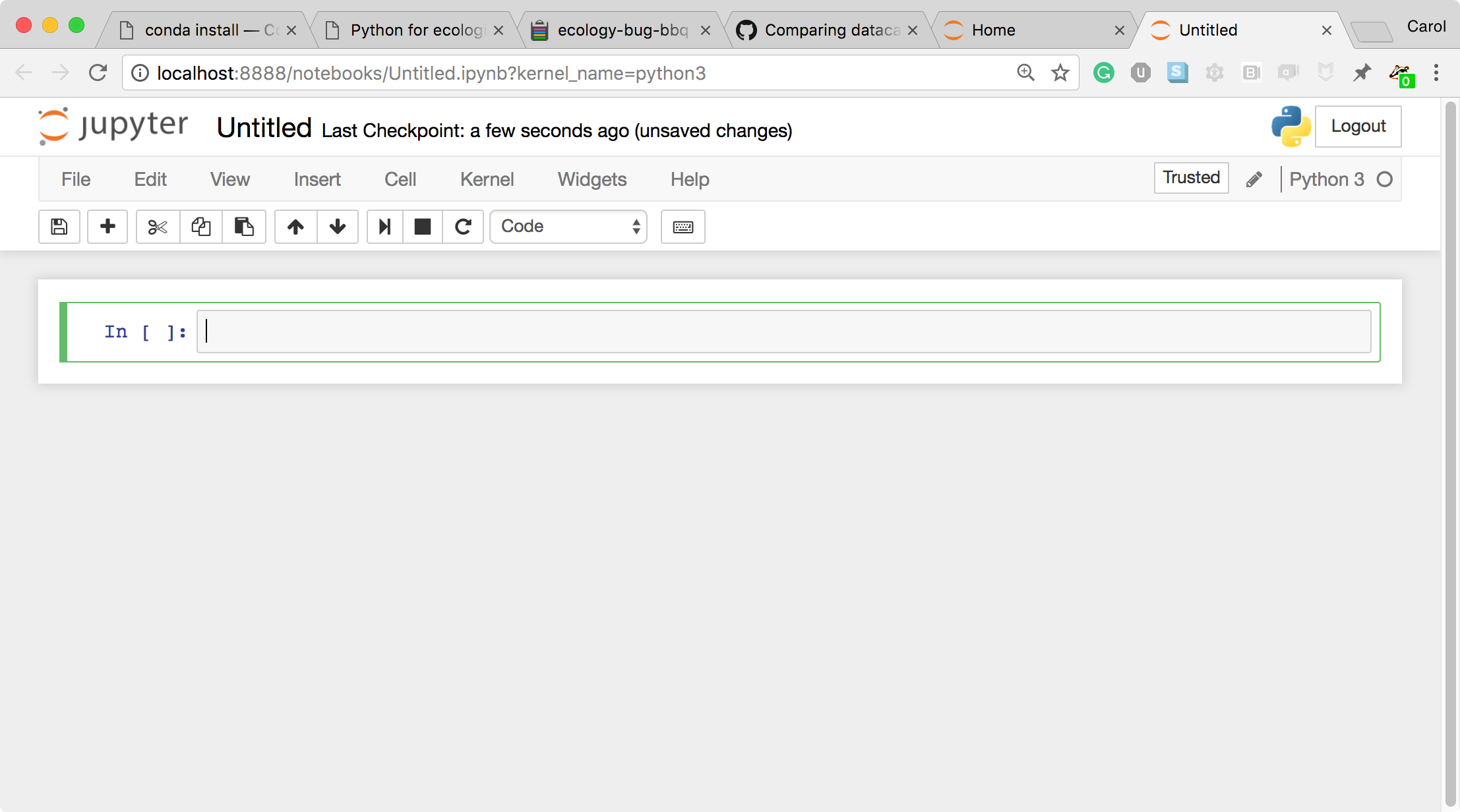What is Markdown? Colab has two types of cells: text and code. Text cells are formatted using a simple markup language called Markdown. To see the Markdown source, double-click a text cell, showing both the Markdown source and the rendered version. Above the Markdown. In IPython this is accomplished by marking up text with the Markdown language. The corresponding cells are called Markdown cells. The Markdown language provides a simple way to perform this text markup, that is, to specify which parts of the text should be emphasized (italics), bold, form lists, etc.
I am taking a course that uses ipython notebook. When I try to download the notebook (through File -> Download as -> ipython notebook), I get a file that ends with '.ipynb.json'. It doesn't open as an ipython notebook but as a .json file so something like this:
I've tried deleting the '.json' in the file name and it doesn't work. How can I convert this file back to something that can be opened and run as an ipython notebook? Thank you very much!


Latex In Google Colab
See also questions close to this topic
Ipynb - 'cells'celltype'markdown'metadata'source Lab 3 Data Types and Arraysn'Welcome to Lab 3nn'So far we've used Python to manipulate numbers. In Markdown, you can list items using numbers, a +, a -, or a. However, if the first item in a list or sublist is numbered, Markdown will interpret the entire list as ordered and will automatically number the items linearly, no matter what character you use to denote any given separate item.
Ipynb Markdown Cheat Sheet

Ipynb Markdown Cheatsheet
- Filter items in a listbox that have been added with json
Well I'm trying to list items that are from listbox created with UserControl and the text properties are defined with a json file.
This is my .json file:
This is the code to load the games as items in the listbox:
This is the code I used in a textbox to try to filter:
But it didn't work, the item names are always GameUserContro.Can someone help me?
- Python - How can I convert S3 folders into JSON hierarchy?
I have created a list using boto3 that contains all the subfolders in my S3 bucket. The list is sorted as below:
I'm trying to convert this list into JSON hierarchy structure:
Whats the best way/libraries to get this going in Python?
- Get separate dataframes according to differents json files
I have three .json files,
I would like to get 3 separate data.frames corresponding to the 3 files, with the filename corresponding to each data.frame. For the moment, I can get a list with the data.
- How to interactively update IPywidgets container (VBox, HBox)?
When I try to update a container that contains other dynamically created container it doesn't change.I tried different options but in the current one I defined the variables holding the containers before the update function and call this function whenever a change occurs:
later in the script I change the containers globally like:
I tried to display the containers before the function only changed the container without display() and tried many other options but it still only shows an empty list.
I put the notebook on github IpySci.ipynb shows the current state with the describet probelm IpySci-Copy1.ipynb my earliest version that show that the basic function are working as intended.
- Jupyter notebook autocomplete showing duplicate options
Jupyter notebook's autocomplete seems working, but somehow it will show duplicate options for the method. For example below:
For each possible options, drop down menu will show 2 identical choices. Why this happen and how to fix it?
- how to predict test rmse in mxnet graphlab? model.evaluate(dataiter) does not work
Here is my code in the given image.
I have written few lines of code to predict a parameter in my dataset, but it only gives RMSE for train data as shown in picture. What would be a way around that it shows RMSE for test data?
model.evaluate(dataiter)does not work, help needed
